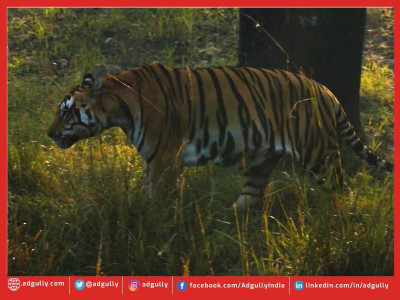CNN’s Mission Tiger focuses on tiger conservation initiatives
Over the past 10 years, tiger conservationists have been making strides in increasing wild tiger populations. However, these animals may come into conflict with the communities living in their territories, presenting dangers to humans and tigers alike. In the next episode of Mission Tiger, Senior International Correspondent Will Ripley reports on conservation efforts in India and Nepal and, traverses the jungles of Thailand, hearing the stories of the people conserving tiger habitats and preventing human-wildlife conflict.
CNN travels to Madhya Pradesh, known as India’s tiger state. Here, a 2,000 square mile corridor of forest that joins Kanha Tiger Reserve with Pench Tiger Reserve is essential for the tiger population. However, the corridor is also home to around 600,000 people, placing them and their livelihoods at risk of tiger attacks. Piyush Yadav, a Conservation Technology Fellow at Resolve introduces the Trailguard AI-based camera system which captures images, identifies the subject and sends these images to forest rangers. Forest rangers then use this information to warn villages of tigers in their area, creating an early alert system to protect not just humans, but the tigers as well.
CNN then goes to Nepal, where humans and tigers co-exist in the Khata Corridor, an area of around 80 square miles joining Bardia National Park in Nepal with Katarniaghat Wildlife Sanctuary in India. The coexistence between tigers and humans in the corridor is complex. Increasing wild tiger populations and humans encroaching on their habitats has led to more tiger attacks, yet homestay owners highlight how the growing tiger population attracts tourists and drives the local economy. Umesh Paudel, a wildlife researcher for Nepal’s National Trust for Nature Conservation, emphasises the importance of investing in community development in order to manage this human-wildlife conflict.
CNN also visits Thailand to explore the Western Forest Complex – 7,000 square miles of protected woodland that is home to much of Thailand’s wild tiger population. Ripley starts his journey at Khao Kho Wildlife Breeding Center and learns how the facility breeds vulnerable species like Sambar deer. These deer are released into the wild to recover their population in the ecosystem, filling a gap in the food chain, and hopefully lead to a boost in the tiger population as their natural prey. Ripley then joins WWF Thailand as they track a tiger in the Mae Wong National Park.


















Share
Facebook
YouTube
Tweet
Twitter
LinkedIn